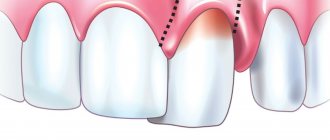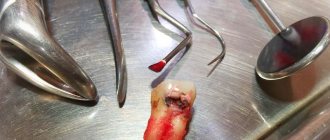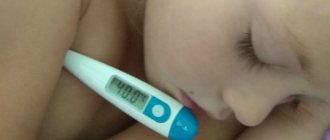1.What is facial pain and classification of prosopalgia?
Facial pain
(“prosopalgia” from the Greek prosopon - face and algos - pain) - refers to a number of symptoms that cause diagnostic difficulties. The surface of the face and its internal structures have many nerve endings and nodes, and pain in them can be associated with the face itself or other organs and parts of the body.
Since the face contains organs related to several body systems, several medical specialists can study and treat facial pain (ENT, ophthalmologist, neurologist, surgeon, dentist). Facial pain can be part of some syndromes, the symptom complex of which affects not only the facial areas. Facial pain can be unilateral or symmetrical.
According to its genesis, facial pain can be classified into the following groups:
- neuralgic pain (somatalgia);
- pain caused by vascular disorders, for example, migraine (sympathalgia);
- muscle pain;
- soreness of the facial bones;
- skin pain;
- osteochondrotic pain;
- pain of inflammatory origin;
- traumatic and post-traumatic pain.
A must read! Help with treatment and hospitalization!
Teeth or nerves?
According to statistics, more than 70% of people who experience pain in the face go to see a dentist. Moreover, most of these patients do not have disorders in the dental system, and the cause of excruciating pain is a variety of diseases of the nervous system, sinuses, eyes, temporomandibular joint, inflammatory and vascular disorders, injuries and functional disorders of the facial muscles.
Article on the topic: My head was squeezed like a helmet. Why does my head hurt, but the disease is not found?
But, unfortunately, dentists are not always able to carry out a competent diagnosis and determine the cause of pain and, instead of referring the patient to another specialist, they begin to carry out treatment on their own, which often leads to unnecessary interventions - depulping or even removing healthy teeth.
Therefore, if you have been suffering from pain in the teeth or oral cavity for years, it makes sense to see a neurologist, since this doctor has a broader outlook and more extensive knowledge than narrow specialists in certain areas (ophthalmologists, surgeons, dentists), and is more likely to be able to determine the area of violations. Diagnosis begins with a consultation, after which the doctor prescribes the necessary examinations. As a rule, to determine the causes of facial pain, magnetic resonance imaging is performed in various modes, and in order to still exclude dental diseases, cone-beam computed tomography of the dental system and others are performed.
Reveal the hidden. Who needs an MRI Read more
2. Symptoms and diagnosis
In addition to the pain syndrome, facial pain can be accompanied by a number of disorders that can help identify the causes. However, it should be borne in mind that these manifestations may be a reaction to the pain itself (an attempt to compensate for an unpleasant condition) and not be signs of certain diseases. Facial pain may be accompanied by the following disorders:
- facial asymmetry;
- muscle tension;
- swelling of the nose and runny nose;
- itching, swelling, redness of the skin;
- nervous tics;
- impaired sensitivity to smells, loss of taste;
- decreased visual acuity;
- increased body temperature;
- tearfulness;
- dry mouth or eyes;
- noise in ears.
The pain itself can be shooting, dull, aching, localized or migrating, radiating to other parts of the head, neck, back
.
“aura”
may be observed - a state when the perception of the surrounding reality is distorted (from altered smells to visual images at the edges of the visible area).
If facial pain is accompanied by a feeling of “heat,” nausea, and pulsation of blood vessels, then the cause of the pain may be an exacerbation of hypertension.
Sometimes the face hurts in combination with numbness in areas of the skin. These symptoms may indicate a stroke, vegetative-vascular dystonia, cervical osteochondrosis, and neuropsychic disorders.
When pain is accompanied by phenomena characteristic of certain diseases, diagnosis should be aimed at confirming or excluding the suspected diagnosis. However, quite often even a thorough examination does not reveal obvious causes of facial pain. In this case, they talk about “atypical facial pain”
. Presumably, its nature lies in the plane of neurological and mental disorders. Such pain can recur throughout life, and at different periods with different frequencies. Most likely, stress and other conditions of modern life disrupt the production of certain neurotransmitters, which affects the skin, blood vessels, nerve conduction and excitability in the facial area.
When visiting a doctor with facial pain, the following diagnostics may be prescribed:
- examinations aimed at identifying trigeminal neuralgia;
- assessment and localization of muscle soreness;
- examination of the skin and mucous membranes (often a herpetic infection of the nose can cause facial pain);
- measurement of intraocular and intracranial pressure;
- radiography, MRI and CT to detect diseases of bones, gums, teeth;
- general blood test (to identify inflammatory diseases by the level of leukocytes and ESR).
Visit our Neurology page
How to deal with facial numbness syndrome due to osteochondrosis
Osteochondrosis of the neck leads to irreversible changes in the vertebrae, which directly affect the general well-being of the patient and may manifest themselves in the form of symptoms that are similar to other pathologies. If discomfort occurs in the upper spine, or disruption of the normal movement of blood and lymph in the tissues of the head and face, it is necessary to conduct a comprehensive examination.
Why does the face go numb with osteochondrosis?
Unpleasant sensations, pain in the back and neck may indicate the development of osteochondrosis, which is formed due to the load on the vertebrae when the spine is in an uncomfortable, static-vertical position for a long time.
If there is damage to the vertebrae, cartilage and ligaments in the cervical region, then disturbances in the sensitivity of the skin of the face may occur, the normal mechanism of blood circulation may change, resulting in increased swelling. These symptoms appear due to changes that occur in bone cells during the development of the disease. Osteochondrosis is characterized by a decrease in the normal thickness of cartilage tissue, which leads to contact and friction of adjacent vertebrae. This can subsequently cause the development of inflammation, pinching of blood vessels, spinal cord nerves, and arteries.
These changes in the circulatory and nervous system of the body affect not only the normal functioning of the spine, but also respond with a burning sensation, numbness of the facial muscles, changes in tissue structure, and symmetry.
Diagnostic examination for osteochondrosis
The dangerous fact is that numbness and a burning sensation in the facial muscles can symbolize the spread of other diseases, for example, the brain, so if unpleasant symptoms occur, it is necessary to conduct a neurological examination.
Headaches and migraines, impaired facial symmetry, numbness, burning, tingling sensation, decreased muscle mobility can be manifestations of impaired blood flow in the brain, the development of tumor growths under the cranial bone, hemorrhage, and stroke. The difference is that in the presence of these symptoms of osteochondrosis, unpleasant manifestations on the face can go away when performing physical activity or, on the contrary, occur when staying in a certain body position for a long time. Also, with diseases of the spine, there is no disruption of mental functions or changes in mental activity, the patient maintains concentration, attention and clarity of thought.
Unfortunately, diagnosing and treating numbness of the facial muscles at home can lead to the progression of the disease. Therefore, it is especially important to conduct an X-ray and tomographic examination of the brain and spinal cord. This will reduce the likelihood of an incorrect diagnosis and help avoid many problems and complications by starting treatment on time.
Treatment of numbness of the facial muscles with osteochondrosis
The fight against the negative consequences of osteochondrosis of the cervical spine is carried out by a neurologist or vertebrologist, who are specialists in the field of diseases associated with the nervous system. As a rule, medications are prescribed after a comprehensive diagnosis, taking into account the individual characteristics of the course of the disease.
To combat disorders in muscle tissue and nerve endings on the face, it is first necessary to begin treatment for osteochondrosis:
- With the help of medications that reduce inflammation in the vertebrae and nearby tissues;
- Rubbing with ointments and creams that reduce pain;
- Medicines that restore the cartilage layer and strengthen joints.
An effective remedy is also a back and neck massage, which improves blood circulation and lymph flow to the brain, saturating and nourishing muscle cells on the face.
Author: K.M.N., Academician of the Russian Academy of Medical Sciences M.A. Bobyr
3.Treats for facial pain
When your face hurts, you should not self-medicate until you see a doctor. Even taking painkillers should be postponed, although most often after an examination the doctor prescribes something for the symptomatic treatment of pain. The fact is that the picture and nature of pain are an important diagnostic criterion, so a blurry picture of facial pain will complicate the examination and making a correct diagnosis.
If during the diagnosis it is possible to determine the cause of facial pain, then treatment of the causative disease is prescribed, and, as a rule, the pain goes away when a therapeutic effect is achieved. This does not exclude the use of painkillers at the beginning of treatment, since prosopalgia can be quite painful and lead to disturbances in sleep and performance.
Treatment of atypical pain that does not have a specific cause includes the drugs carbamazepine, finlepsin, mazetol
and others used for trigeminal neuralgia.
In addition, a psychological examination is indicated, identifying the triggers for pain, and psychocorrection sessions. Physiotherapy can also be a good addition
- magnetic and laser therapy;
- electrophoresis with analgin and lidase;
- electrosleep;
- treatment with diadynamic currents;
- hydrocarbon treatment.
About our clinic Chistye Prudy metro station Medintercom page!
Facial pain
The face is an important component of a person’s image; it reflects not only our mood and success in life, but also our well-being. Therefore, the significance of pain in this part of the body is difficult to overestimate.
Unfortunately, it is not always possible to make a correct diagnosis right away, because there are many reasons for the development of facial pain. Most often, both patients and doctors sin due to dental diseases. Often the patient even loses perfectly healthy teeth in an attempt to get rid of the pain before the correct diagnosis is made.
Why does it hurt?
Attention! This article will not
facial pain caused by diseases of the ENT organs, eyes and dental system, primary headaches (migraine, tension headache, cluster headache) are described (according to the International Classification of Headache Disorders, 2004).
Patients are often concerned about trigeminal neuralgia, Tholos Hunt syndrome, and atypical facial pain.
1. For trigeminal neuralgia
pain most often occurs in the area of the second and third branches of the nerve (upper and lower jaw). The disease is characterized by severe short-term attacks of pain lasting up to 2 minutes, which are provoked by irritation of a certain area of the skin of the face or the mucous membrane of the mouth or nose. Pain can be triggered by the most ordinary events - eating cold or hot food, wiping the face with a towel, etc. Usually, after the onset of an attack, a person does not cry or scream, but freezes in place, waiting for the severe pain to subside.
The causes of neuralgia can be brain tumors, multiple sclerosis, infectious diseases (most often herpes zoster), vasoneural conflict (contact irritation of the trigeminal nerve by a nearby artery).
Neuralgia of other cranial nerves (glossopharyngeal, laryngeal, etc.) can also cause facial pain, but are extremely rare.
2. If you gradually develop symptoms such as “boring” or “gnawing” pain in the eye, redness, double vision, drooping eyelid and exophthalmos (displacement of the eyeball forward, “bulging eye”), then most likely this is a syndrome Tolosa Hunta (painful ophthalmoplegia)
. Symptoms usually get worse over a few days. There may be spontaneous improvements. Another characteristic feature of this disease is the dramatic improvement with corticosteroids.
The diagnosis of Tholos Hunt syndrome is made if all other causes have been excluded, and there are many of them: infectious diseases, tumors, vascular lesions, sarcoidosis. The causes of this disease are not fully understood; it is believed that the main mechanism of development is autoimmune.
3. Atypical facial pain
is another cause of facial pain that is a diagnosis of exclusion. When examined and questioned, patients with atypical facial pain indicate areas of pain that do not fit into any zone of innervation of the cranial nerves.
The characteristics of pain can be very different, the manifestations are disguised as diseases of the teeth, ENT organs and other diseases. Such patients often have to go through many examinations by a dentist, maxillofacial surgeon, ENT surgeon, and neurologist. Moreover, the data from these examinations do not explain the cause of facial pain.
And that's not so bad. Healthy teeth are often removed, believing that facial pain is caused by dental pathology. Another problem is that patients with this disease often suffer from depression, anxiety and other mental disorders, which makes both treatment and diagnosis difficult. Actually, these pains are considered psychogenic. Most often they are provoked by stress or some kind of mental disorder.
Surveys
For facial pain, consultations with a dentist, ENT specialist, ophthalmologist, and sometimes an oral surgeon are often required to rule out pain that is NOT caused by neurological problems.
In most cases of facial pain, it is necessary to perform an MRI (often with contrast, in various modes) of the brain to exclude tumors, multiple sclerosis, vasoneural conflicts and other pathologies.
Treatment
In most cases of facial pain, with the possible exception of Tolos Hunt syndrome (which is treated as an autoimmune disease with hormones), you will be offered anticonvulsants (eg, carbamazepine, pregabalin, topiramate) or antidepressants (amitriptyline, duloxetine). The fact is that it is these groups of drugs that are most effective in treating pain.
If there is a vasoneural conflict (for example, with trigeminal neuralgia), you may also be offered a neurosurgical operation, when a special gasket is installed between the vessel and the trigeminal nerve, which prevents the artery from irritating the trigeminal nerve. Non-medicinal methods are also very effective - acupuncture, physiotherapy, biofeedback methods, psychotherapy, etc.
In any case, do not self-diagnose or self-medicate, consult a doctor.
Be healthy!
Maria Meshcherina
Photo istockphoto.com
INFECTIOUS PAINS
Subcutaneous infections on the face are most often caused by staphylococcus. If the immune system is weakened, bacteria are activated: a boil forms under the skin. It can ripen for several days, and all this time it causes pain on the skin. Without treatment, the process of boil maturation is delayed, and the infection finds more and more new foci. Infection of the facial nerve is an extremely undesirable complication. A typical sign is a distorted face, swelling is visible at the site of the boil. In this case, an integrated approach is required: not only to eliminate the infection, but also to restore the damaged nerve and strengthen the immune system.
IF SUCH SYMPTOMS OCCUR, IT IS IMPORTANT TO SEE A DOCTOR IMMEDIATELY!









